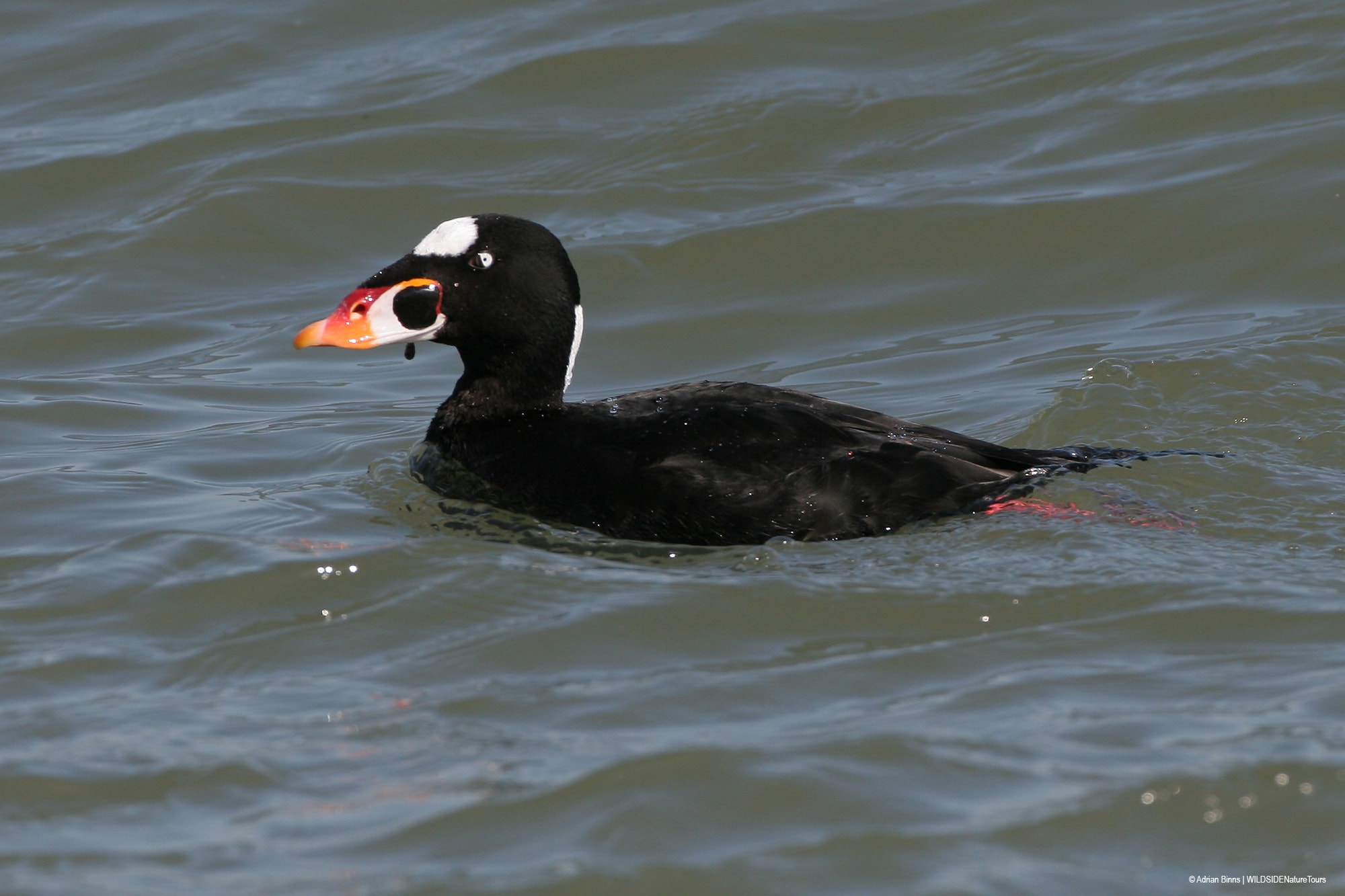
What’s in a Name : Scoter
Nov 9, 2020 | by Adrian Binns
This time of year, when days grow shorter and temperatures drop, huge flocks of sea ducks migrate along the Atlantic and Pacific coasts. All three of North America’s scoters – Black, Surf and White-winged – journey south from their breeding grounds in the tundra pools and rivers of northern Canada and Alaska. They overwinter as far south as the Baja peninsula on the west coast, and along the eastern seaboard, to the Gulf of Mexico coastline in Texas and the Florida panhandle. Scoter migration, featuring vast lines of mixed species streaming fast and low over sea waters, is quite a spectacle to observe!

Black Scoter
Scoters are fascinating to watch, and their name is worth pondering, too. The odd word doesn’t relate to known objects, except maybe a vague allusion to a two-wheel motorized form of transportation. It is unknown exactly how it came to be named scoter, it seems that it is likely a spelling error for sooter, as in soot-colored duck, the English translation of one of its German names that referred to the ducks’ dark color. Black Scoter is appropriately named for its appearance; the genus name melanitta derives from the Greek melas meaning black, and netta for duck.
Whatever the name origins, scoters are a sight to behold along winter coastlines. Bundle up and plan a visit to the shore today!
































